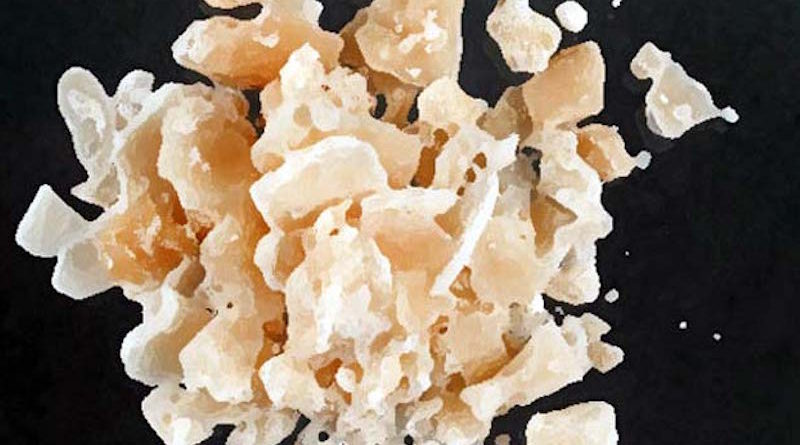What Is Crack Cocaine?
What Is Crack Cocaine?
Advertisement
Crack cocaine is a stimulant derived from powder cocaine using a chemical process. It looks like sold rock or crystal varying in color from yellow to white. It is the most powerful form of cocaine, and can but up to 75-100% pure. Furthermore it is usually smoked, allowing the substance to reach the brain more quickly and thus creating a stronger more immediate high.
How Is Crack Cocaine Made?
According to the Department of Justice, crack is made by dissolving powdered cocaine in a mixture of water and ammonia or sodium bicarbonate. The solution is boiled until a chemical reaction between the cocaine and the solution produces a solid rock-like product, which is then removed, dried, and broken in to chunks finished crack cocaine.
Why Is Crack Called Crack?
Crack, or crack cocaine, is called crack because of the crackling sound it makes when it is smoked, the usual method of consumption.
Where Did Crack Cocaine Come From?
Advertisement
Crack cocaine first emerged during the cocaine boom of the 1970’s, and by the 1980’s was extremely popular, especially in inner-cities. It remains popular today, particularly because it is inexpensive to manufacture and produces such an intense high for a relatively low price compared to other illegal drugs.
What Are The Short-Term Effects Of Crack Cocaine Use?
Almost always smoked, the high of crack cocaine is felt by the user almost immediately after inhaling the drug, and can last anywhere from 5 to 15 minutes. After the high subsides, the user experiences an extreme low, produces an extreme desire for more of the drug. Many people report feeling addicted to the drug after just 1 or 2 uses. Short-term effects of use include:
- Increased heart rate
- Dilated pupils
- Increased breathing
- Intense Euphoria
- Decreased Appetite
- Paranoia/aggression
What Are The Long Term Effects Of Crack Cocaine?
Advertisement
Prolonged crack cocaine abuse can cause:
- Severe depression
- Mood swings
- Paranoia
- Psychosis
- Hallucinations
- Heart Disease
- Heart attack
- Stroke
- Respiratory problems
- Seizures
- Death
How Does Crack Cocaine Affect The Brain?
Crack cocaine is a stimulant that causes an intense rush of dopamine to the brain, a chemical in the brain that is part of our reward system. After a few uses of crack cocaine, the drug begins to alter this reward system, literally changing the structure of the brain. As a result, the user develops an intense psychological craving for crack cocaine because of the way the reward structures have been altered.
Some scientists believe that the reason crack cocaine is so addictive is because of the speed at which the drug reaches the reward center of the brain. In fact, in a 2008 study done on mice, liquid crack cocaine was intravenously self-administered to mice at varying speeds in response to certain actions, and found that the mice actually worked harder to self administer the drug when the drug was injected at a faster rate, leading scientists to believe that the fast the drug enters the bloodstream, the more intense and pleasurable the effects.
How Many People Die Each Year From Crack Cocaine?
According to the National Institute on Drug Abuse, there were just over 7,000 overdose deaths from cocaine in 2015 – a 60% increase from 2010.

